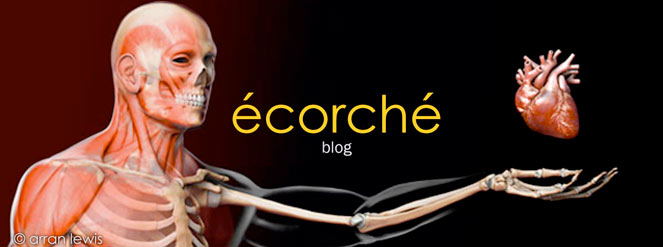Looking at the skeletal structure of the specimens on show at Bodies the Exhibition in New York I noticed extremely thin bones of the pelvis and scapular of many of the bodies on show, which from what I understand is a clear sign of illness or malnutrition. One of the specimens I looked at even had perforations through the Ilium. I did quite a lot of research into this subject for my dissertation and was quite surprised at what I discovered.
On a positive note one of the most amazing things that I saw was within a darkened room filled with many glass presentation cabinets containing whole or sectioned parts of the cardiovascular system, with the arteries dyed in red. The main lighting in the room was from within the cabinets which brilliantly illuminated the specimens. Here is an example from Body Worlds 4:
and here is another interesting example showing the renal arteries:
and finally the lower arm:
All images Copyright ©Gunther von Hagens, Institute for Plastination, Heidelberg, Germany,
Extract from Bodyworlds web site:
Dr. Gunther von Hagens is the world’s leading anatomist, the inventor of Plastination (the method of specimen preservation that makes anatomical display possible), and the originator of BODY WORLDSKOERPERWELTEN (its German title), the first of its kind anatomical exhibition. Dr. von Hagens invented Plastination at the University of Heidelberg in 1977, developed the use of plastinated specimens for medical education and preservation, and established the International Society for Plastination. More than 400 universities in 40 countries utilize Dr. Gunther von Hagens’ preservation technique in their curriculum.






